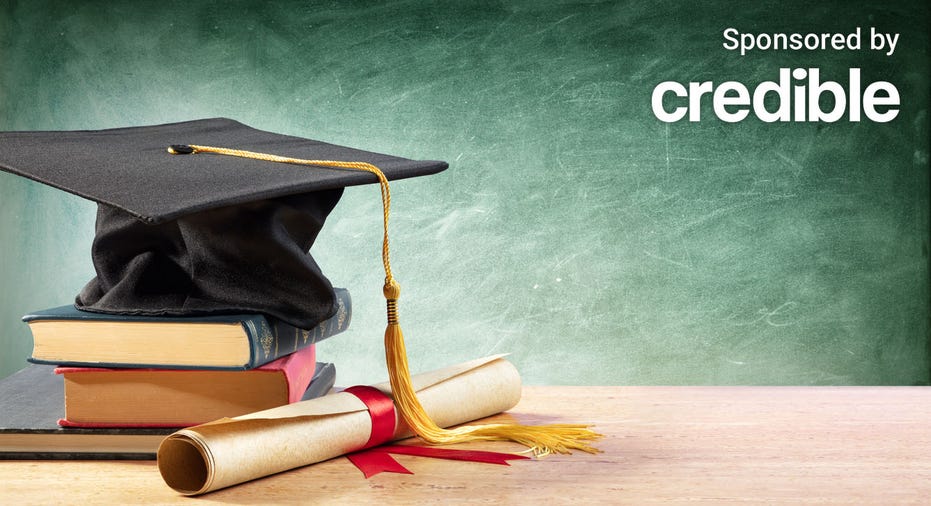State of the Union: Biden pushes for investment in 'America's best kept secret'
The president touched on his agenda to make community college more affordable

President Joe Biden has previously campaigned on forgiving student debt and making community college tuition-free. Here's where his economic agenda stands. (iStock)
Fighting inflation was the "top priority" during President Joe Biden's first State of the Union address on March 1. One aspect of the president's economic plan, he said, is to reduce student debt by investing in community colleges, Pell Grants and Historically Black Colleges and Universities (HBCUs).
"Let’s increase Pell Grants and increase our historic support of HBCUs, and invest in what Jill [Biden] — our First Lady who teaches full-time — calls America’s best-kept secret: community colleges," Biden said.
The American Rescue Plan has "helped more than 5,000 universities and community colleges make higher education more affordable," the White House reports.
However, Biden has already rolled back parts of his agenda to address the student debt crisis. The president has so far been unable to deliver on his campaign promise of student loan forgiveness. Plus, the Biden administration cut tuition-free community college from the Build Back Better spending bill, which has so far failed to gain enough support among Senate lawmakers.
Keep reading to learn how the president plans to increase investments in higher education and community colleges. And if you're struggling to repay your student loans as forbearance expires, consider your alternative repayment options like refinancing. You can compare student loan refinance rates on Credible for free without impacting your credit score.
COLLEGE TUITION, FEES ARE UP 33% SINCE 2000
Biden's agenda for making higher education more affordable
As a presidential candidate, Biden pledged to forgive at least $10,000 of student loan debt per borrower — but after more than a year in office, the president has not yet delivered on this campaign promise. However, student debt cancellation was just one aspect of Biden's plan to lower the price tag of post-secondary education. Here are some other agenda items the president wants to implement:
- Providing two years of debt-free community college. Biden also wants to create a new financial aid program to help improve success among community college students and invest $8 billion in community college facilities and technology.
- Expanding the Pell Grant program. The president plans to double the maximum value of Pell Grants and automatically increase the value based on inflation. He also wants to relax eligibility requirements to include more middle class students, DREAMers and formerly incarcerated Americans.
- Making HBCUs more affordable. The president wants to invest $18 billion in grants to HBCUs and Tribal Colleges and Universities (TCUs) to make education more affordable for these students. He said this is equivalent to about two years of tuition costs per low-income student with financial need.
- Offering free tuition at four-year colleges. Biden adopted Sen. Bernie Sanders' proposal to make public colleges and universities tuition-free for families with incomes below $125,000. He estimates that this would help about 8 in 10 families finance college expenses.
- Simplifying the income-based repayment program (IBR). Under current IBR plans, federal student loan borrowers may pay between 10-20% of their discretionary income toward their loans. Biden's plan would reduce that to 5% of their discretionary income over $25,000.
5 STEPS TO GETTING STUDENT LOANS FOR AN ASSOCIATE'S DEGREE
Notably, the Biden administration has extended the federal student loan payment pause three times since the president took office. However, that debt relief is about to expire in May, when the forbearance period ends. If you're unable to resume student loan payments in two short months, you may be considering refinancing to lower your monthly payment. You can learn more about student loan refinancing by visiting Credible.
FAFSA CHANGES ARE COMING BUT 52% OF COLLEGES AREN'T PREPARED
How to prepare for the end of student loan forbearance
Biden's extension of the student loan payment pause provided much-needed relief for millions of borrowers, but the vast majority (93%) are unprepared to resume monthly payments in May, according to a recent survey. Here's how you can become better financially prepared for the end of student loan forbearance:
- Apply for additional deferment. The Department of Education offers up to 36 months of deferment for federal student loan borrowers who meet certain eligibility criteria. Keep in mind that interest may accrue during deferment, which can add to the total cost of borrowing over time.
- Enroll in an IDR plan. It may be possible for borrowers to reduce their federal student loan payments to between 10% and 20% of their disposable income by enrolling in income-driven repayment on the Federal Student Aid (FSA) website.
- Refinance to a lower interest rate. Student loan refinancing may help some borrowers reduce their monthly payments by $250. However, refinancing your federal loans into a private student loan would make you ineligible for IBR, forbearance and select student loan forgiveness programs.
Student loan refinance rates are still near all-time lows, which means that graduates may be able to save more money than ever by refinancing their student debt. You can browse current interest rates from private lenders in the table below, and use Credible's student loan calculator to decide if this debt repayment plan is right for your financial situation.
RESUMING STUDENT LOAN PAYMENTS WITHOUT DEBT FORGIVENESS WOULD BE 'DISASTROUS,' DEMOCRATS WARN
Have a finance-related question, but don't know who to ask? Email The Credible Money Expert at moneyexpert@credible.com and your question might be answered by Credible in our Money Expert column.




















